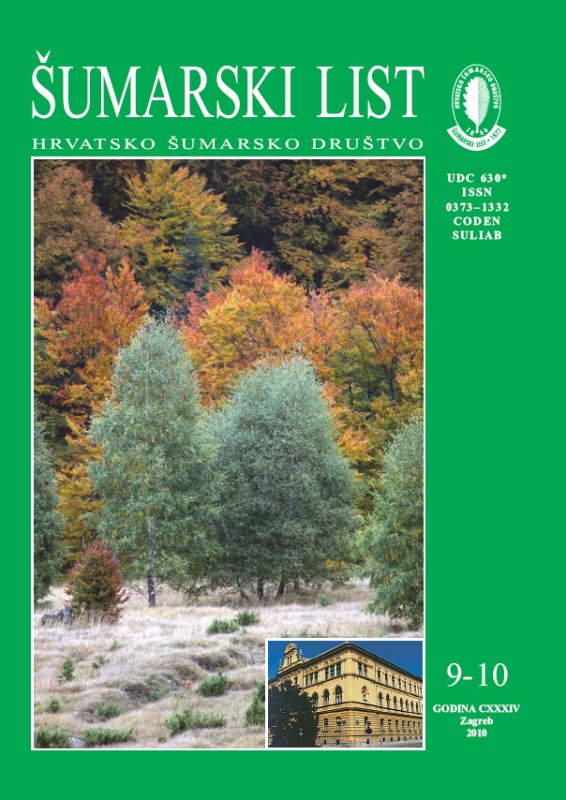
broj: 9-10/2010
pdf (7,71 MB) |
|
||||||||||||||
| RIJEČ GLAVNOGA UREDNIKA | ||
| Branimir Prpić | ||
| THE NEW FOREST LAW pdf HR EN | 445 | |
| IZVORNI ZNANSTVENI ČLANCI | ||
| Pandža,M., V.Krpina | UDK 630* 187 + 188 (001) | |
| Forest Vegetation of the Island of Vrgada and its Islets (Dalmatia, Croatia) pdf HR EN | 447 | |
| Pejnović,D., K.Krapinec, M.Slamar | UDK 630* 156 (001) | |
| Hunters in Croatia as a Socio-Geographic Group and their Socio-Demographic Characteristics pdf HR EN | 461 | |
| Šerić Jelaska, L., A. Ješovnik, S. D. Jelaska, A. Pirnat, M. Kučinić, P. Durbešić | UDK 630* 114.6 + 411 (001) | |
| Variations of Carabid Beetle and Ant Assemblages, and their Morpho-ecological Traits within Natural Temperate Forests in Medvednica Nature Park pdf HR EN | 475 | |
| Summary:The aim of this study was to investigate responses of ant and carabid assemblages and their morpho-ecological traits to habitat differences within natural temperate forests in Medvednica Nature Park. Toquantify habitat differences in examined areas, both structural heterogeneity of the vegetation and taxonomic diversity of plants were measured on six plots. Habitat complexity was quantified using four habitat characteristics within the site: tree canopy cover; shrub canopy cover; ground herbs and leaf litter cover. Ants and carabids were sampled using pitfall traps. Ant species richness and abundance, unlike carabid species richness were positively correlated with habitat complexity, especially with leaf litter cover on plots. The responses of insects morpho-ecological traits to habitat were recorded, with more large bodied carabids present in more complex site and higher abundance of opportunist ant species in more open sites with low complexity of vegetation. Higher dominance of certain carabid species at the lower plots then those on the top of the mountain, suggest competitive exclusion, confirming lower areas as more stable. Species adapted to colder climate, that inhabit higher elevations such as flightless forest specialist Cychrus caraboidesandCara-bus irregularis, and boreo-montane ant species Camponotus herculeanus, are less competent to colonize lower areas. Furthermore, they may not survive severe instability of their habitats, especially in a changing climate. Overall results suggest that conservation issues need to be focused on preserving stability and structural complexity of forest habitat in summit areas of the mountain. Key words: altitude; biodiversity; forest habitat; litter; nature conservation; vegetation structure | ||
| Čas, Miran | UDK 630* 156 (001) | |
| Disturbances and Predation on Capercaillie at Leks in Alps and Dinaric Mountains pdf HR EN | 487 | |
| PRETHODNO PRIOPĆENJE | ||
| Matošević, D., M. Pernek, B. Hrašovec | UDK 630* 453 | |
| First Record of Oriental Chestnut GallWasp (Dryocosmus kuriphilus) in Croatia pdf HR EN | 497 | |
| PREGLEDNI ČLANCI | ||
| Tomićević, J., M. A. Shannon, D. Vuletić | UDK 630* 903 + 907.1 | |
| Developing Local Capacity for Participatory Management of Protected Areas: The Case of Tara National Park pdf HR EN | 503 | |


